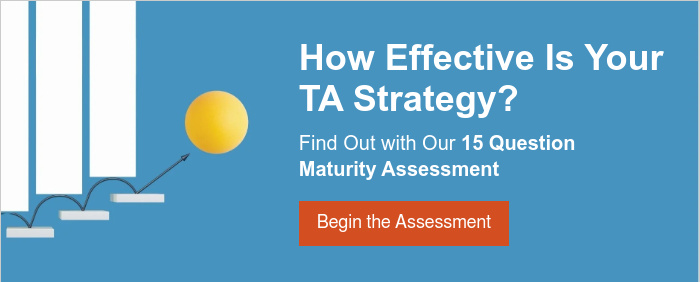If your team is already leveraging talent intelligence to guide recruitment and workforce planning, you're ahead of the curve. But having access to labor market data is just the starting point. The real value comes from translating that data into strategic action by refining your approach, prioritizing investments, and aligning hiring with business needs.
Many organizations collect competitive insights or pull salary benchmarks, but few are turning those inputs into lasting outcomes. Here’s how to move from insight to impact and make talent intelligence a true competitive advantage.
How to Transform Talent Intelligence into Actionable Strategy

Build Workforce Plans That Adapt to the Market
Workforce planning should no longer be a once-a-year exercise. High-performing teams use real-time recruitment market intelligence to continuously adapt their plans to changing conditions.
Use external labor market data to:
- Detect early signs of talent shortages in high-priority roles
- Explore flexible talent models (remote, contingent, or contract) based on availability
- Identify skill gaps by region, department, or role
- Quantify risks like turnover probability or location-specific saturation
Embedding talent intelligence into workforce planning helps you stay ahead of shifts, guide internal conversations with confidence, and address gaps before they grow.
Localize and Personalize Your Recruitment Strategy
Talent markets vary widely by location, even for the same job title. A competitive salary in one city may be below market in another. Localized talent intelligence enables more precise recruitment.
With this data, your team can:
- Target overlooked metros with growing talent clusters
- Adjust salary bands to reflect local expectations
- Focus sourcing efforts on regions with lower competition
This localization reduces wasted spend, improves offer acceptance, and helps you tailor strategies across multiple locations.
Turn Competitor Activity into an Advantage
Competitor hiring analysis is one of the most actionable uses of talent intelligence. Move beyond headcount tracking and uncover insights that shape your recruitment strategy:
- Identify which roles competitors are filling and where
- Benchmark job descriptions, benefits, and employer branding
- Analyze review sentiment and reputation trends
- Track emerging perks or policies gaining traction in your industry
These insights help differentiate your value proposition and ensure you’re not falling behind on candidate expectations.
Use Data to Strengthen Internal Alignment
Too often, talent acquisition teams are tasked with meeting aggressive headcount goals without a shared understanding of what’s happening in the external market. High-maturity talent functions use labor market intelligence to manage expectations and inform internal conversations.
With the right insights, you can:
- Educate hiring managers about supply-demand realities
- Set realistic timelines for filling hard-to-source roles
- Justify salary or budget adjustments with market benchmarks
- Identify opportunities for internal mobility or upskilling
With data to support their recommendations, talent acquisition teams shift from order-takers to trusted strategic advisors.
Align with Broader Workforce Trends
Advanced teams use talent intelligence not just to react—but to anticipate. Predictive analytics and macro labor trends can reveal:
- Emerging job roles and future-ready skill sets
- Growing demand for cross-functional or hybrid capabilities
- Shifts in candidate preferences around flexibility, purpose, and development
- Regional demographic patterns that impact long-term talent supply
Linking recruitment efforts to these bigger-picture trends helps you support organizational transformation, whether you’re entering a new market, restructuring teams, or investing in future capabilities.
Embed Talent Intelligence into Daily Workflows
The most impactful use of talent intelligence comes when it’s embedded into daily operations and not just treated as a quarterly report.
Make insights actionable by:
- Using data during intake meetings to set expectations
- Setting up real-time dashboards and alerts for key roles
- Training recruiters and hiring managers on how to interpret data
- Hosting monthly or quarterly reviews to adjust based on labor trends
The goal isn’t to overload your team with charts and stats. It’s to make talent intelligence a natural part of how you scope roles, craft offers, and plan ahead.
Rethink Success Metrics to Reflect Market Complexity
As your use of talent intelligence evolves, so should your KPIs. Go beyond time-to-fill and cost-per-hire. Track metrics that reflect your strategic impact:
- ROI of sourcing channels by role and location
- Forecast accuracy for high-volume hiring areas
- Offer competitiveness against local and industry standards
- Long-term trends in employer brand sentiment
These metrics give you a fuller picture of how well your talent acquisition strategy is aligned with market conditions, and where to refine further.
Turning Insight into Advantage
Having access to talent intelligence is just the beginning. What sets high-performing teams apart is how they use that data day to day, role by role, and decision by decision.
When market data becomes part of how you scope roles, plan ahead, and guide internal conversations, your team moves from reactive to strategic. And that shift can make a real difference through faster hires, stronger alignment, and better long-term outcomes.
Already Using Talent Intelligence?
Now’s the time to take it further. See how your competitive insights stack up, and how to sharpen them further, with our Talent Acquisition Maturity Assessment.






